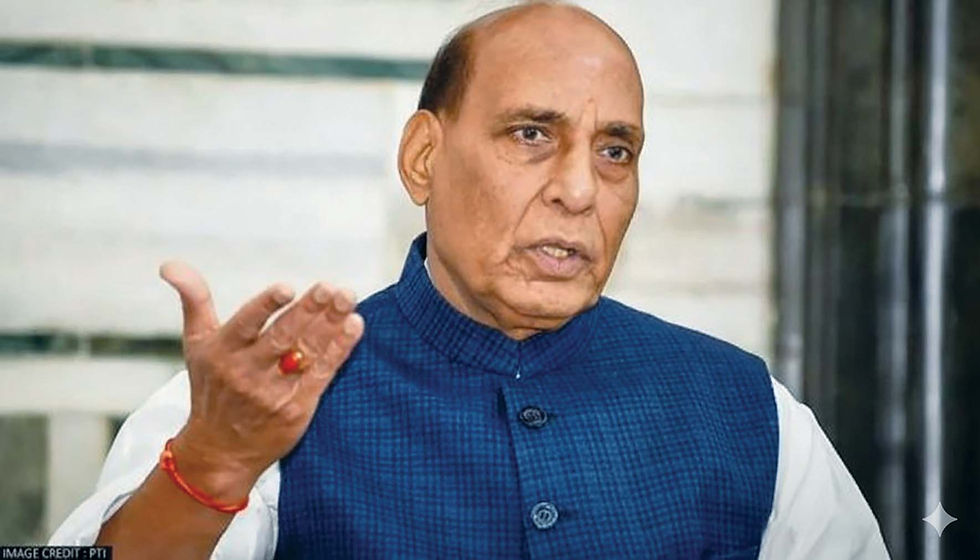Modi’s Missile Moment
- Ruddhi Phadke

- Jun 12
- 3 min read
India’s bold response to terror has redrawn the regional balance while unsettling Trump’s America.

The April 22 Pahalgam terror attack triggered India’s shift to a policy of offensive defence by targeting not only the perpetrators but also their supporters and sympathisers. Soon after the massacre of civilians at Pahalgam, Prime Minister Narendra Modi had made India’s intent clear at a rally in Bihar when he declared his resolve for decisive action in terms that left little room for ambiguity.
The world was left guessing what form this response might take. India’s past retaliatory strikes in Uri, Balakot and Galwan had already signalled a more assertive posture. Yet the full scale of India’s technological reach and military coordination across the Army, Navy and Air Force, and backed by agencies such as DRDO, ISRO and the NTRO had not yet been fully grasped by the international community. India’s first strike, part of what was soon dubbed Operation Sindoor, targeted only terrorist bases and camps. Civilian and military installations were deliberately left untouched. The operation was executed with precision and secrecy, with key friendly nations discreetly informed in advance.
Pakistan responded with a barrage of armed drones aimed at military, civilian and religious targets. But India had anticipated the tactic. Analysts note that modern drone assaults often begin with waves of unarmed drones to overwhelm radars, followed by the real offensive.
Indian forces, expecting such a scenario, had pre-emptively deployed countermeasures. The result was the near-total elimination of the incoming drones.
That, in turn, gave India justification for escalating its response. Within hours, it crippled Pakistan’s air power, disabling more than 30 percent of its fighter fleet, gouging deep craters into airstrips, and destroying a mix of American F-16s and Chinese-made warplanes. Radar systems were knocked out. It was only then that Washington stirred.
During its stunning reply to Pakistan, India’s BrahMos, Aakash-Teer and S-400 systems had rendered Pakistan’s modern fighter aircraft and radar equipment all but obsolete. The BrahMos missile, in particular, proved both undetectable and unstoppable, prompting a spike in international demand. India had already offered the system to the Philippines, with agreements underway with Vietnam and Indonesia. (Days after the operation, Modi inaugurated a factory in Uttar Pradesh to produce 100 BrahMos missiles a year)
To the surprise of many, the United States abruptly intervened with President Trump announcing a unilateral ceasefire and bombastically casting himself as a peace broker in what it framed as a dangerously escalating conflict between two nuclear-armed neighbours. But India had never sought mediation. Instead, the US reportedly pressured Pakistan’s Director-General of Military Operations to initiate a truce with his Indian counterpart.
The scale and swiftness of India’s response caught the world off guard. In Washington, alarm bells rang. India was no longer merely self-reliant but was emerging as a formidable military-industrial power. Some observers predict that global demand for F-16s will decline. Turkey, a leading drone exporter, saw its products deployed by Pakistan fail spectacularly, as did other high-end military hardware Islamabad had procured.
One of America’s redeeming features is that uncomfortable truths eventually surface. It is now suggested that the Nur Khan Airbase in Chaklala, Rawalpindi severely damaged during India’s strike was not merely a Pakistani facility. It may have hosted US forces, F-16s, AWACS radar systems, and even a clandestine stockpile of nuclear weapons. The presence of such a covert American installation, allegedly maintained to monitor Iran, was neither acknowledged to India nor in keeping with the spirit of cooperation within the Quad. Had India been informed, it might have spared the site.
India’s National Security Advisor, Ajit Doval, and his team are said to have identified this facility without prior intelligence from Washington. If so, the implications are stark. Either American defences were penetrated undetected, or India has developed surveillance capabilities that rival those of its Western partners. Both possibilities are disquieting for the United States. Though technically unintentional, India may have struck a US outpost. But since Washington cannot admit this without implicating itself, retaliation is not an option.
Nonetheless, the unease in Washington is palpable. India’s steady drift away from Western influence - buoyed by its looming status as the world’s third-largest economy - has not gone unnoticed.
The Trump administration is reportedly considering punitive economic measures. But despite India’s continued imports of Russian oil in defiance of Western embargoes, the US has so far refrained from action, hoping to maintain market access for firms such as Tesla, Apple and Harley-Davidson. Whatever the future may hold, India appears ready to face anything that Trump may throw at it, confident in the momentum of its economic and military rise.





Comments